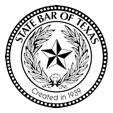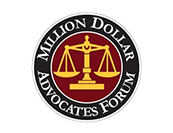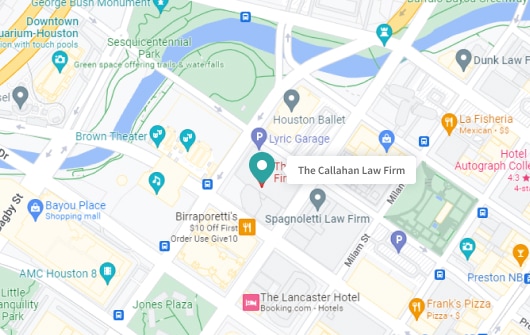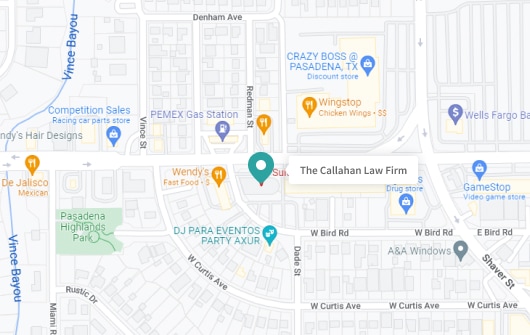Traffic Light Accidents: Understanding Liability

Traffic light accidents are a common yet complex type of road incident that can lead to serious personal injuries and substantial property damage. Navigating the aftermath of such an accident requires a deep understanding of traffic laws and the nuances of liability and fault.
These incidents often involve disputes over right-of-way, and understanding the circumstances and legal implications of traffic light accidents is essential for those involved.
Whether you were injured as a driver, passenger, or pedestrian, our experienced legal team is here to support you through every step of the legal process, ensuring that justice is served and your recovery is prioritized. With more than 25 years of experience, we know what it takes to get you the justice you deserve. Contact The Callahan Law Firm today to schedule your no-cost consultation.
What Causes Traffic Light Malfunctions?
Traffic light malfunctions can occur for a variety of reasons, with some of the most common including:
- Weather Conditions: Adverse weather, such as storms, heavy rainfall, high winds, and lightning strikes, can damage traffic light components. Excessive moisture and exposure to extreme temperatures can lead to corrosion, electrical short circuits, or mechanical failures within the traffic signal system.
- Vandalism: Intentional acts of vandalism, including graffiti, tampering, or physical damage to traffic light equipment can disrupt signal operation. Vandals may target traffic lights out of mischief or with the intent to cause traffic chaos, posing risks to both drivers and pedestrians.
- Maintenance Lapses: Inadequate or infrequent servicing of traffic lights can result in operational issues and malfunctions. Failure to perform routine maintenance checks, such as inspecting wiring, bulbs, and control systems, can lead to overlooked problems that escalate over time, ultimately causing signal failures.
- Age and Wear: Older traffic light systems are more susceptible to component wear and deterioration over time. Continuous exposure to environmental factors, along with normal wear and tear, can degrade the integrity of signal fixtures, wiring, and control mechanisms.
- Power Outages: Interruptions in electrical power supply, whether due to grid failures, downed power lines, or transformer malfunctions, can render traffic lights inoperative. Without a stable power source, traffic signals cannot function properly, leading to traffic congestion, confusion, and potential accidents.
Regular maintenance and timely upgrades are crucial for mitigating these risks and ensuring traffic lights operate reliably. Contacting a lawyer following a traffic accident can be helpful, particularly in cases involving significant damages, injuries, or disputes.
What is the Rule When Traffic Control Devices Malfunction?
When traffic control devices malfunction, the rule in Texas is generally to treat the intersection as if it were governed by stop signs in all directions. This means drivers are required to come to a complete stop at the intersection and then proceed with caution, yielding to any vehicles that arrived before them or to those on the right if arriving simultaneously.
This rule ensures safety and order at intersections when traffic signals fail to operate correctly. It’s important for drivers to exercise extra caution, slow down, and be prepared to stop when approaching an intersection with malfunctioning traffic signals.
What to Do If a Collision Happens at a Broken Traffic Light
If a faulty traffic light has caused an accident, taking the right immediate steps is crucial for safety, legal, and insurance purposes. Here’s what to do:
- Ensure Safety: First, check for injuries among all parties involved and move to a safe location if possible without further endangering anyone. It’s wise to relocate vehicles if they pose a hazard in their current location and can be moved safely.
- Call Emergency Services: Dial 911 to report the accident and request medical assistance if there are any injuries. The presence of police is necessary to document the accident officially, which is important for insurance and legal processes.
- Exchange Information: Exchange contact and insurance information with the other parties involved in the collision. This includes names, addresses, phone numbers, driver’s license numbers, license plate numbers, and insurance policy details.
- Document the Scene: Take pictures or videos of the accident scene if possible. This should include the malfunctioning traffic light, all vehicles involved, any visible damages, and relevant road conditions. This documentation can be crucial for insurance claims and other legal matters.
- Gather Witness Information: If there are witnesses, collect their contact information. Witness accounts can be valuable in establishing what happened leading up to the accident.
- Report the Accident to Your Insurance: Inform your insurance company about the accident as soon as possible. Provide them with all the gathered information and cooperate with their investigation.
- Consider Legal Advice: Depending on the severity of the accident and the complexities involved with the malfunctioning traffic light, it might be wise to consult with a legal professional. They can provide guidance on your rights and help you determine the best course of action.
Following these steps can help manage the aftermath of a collision at a broken traffic light more effectively, ensuring that your safety and legal rights are protected.
Who Has the Right of Way at a Four-Way Stop?
At a four-way stop, including situations where traffic lights malfunction and the intersection is treated as a four-way stop, the Texas right-of-way rules are designed to maintain order and safety. Here’s how it works:
First Come, First Served: The driver who arrives at the intersection first has the right of way and should proceed through the intersection ahead of others. This rule requires all drivers to come to a complete stop at the stop line.
Simultaneous Arrival: If two or more drivers arrive at the intersection at the same time, the driver on the right has the right of way. This means that you should yield to the vehicle that is directly to your right.
Right Turns Before Left Turns: When vehicles arrive head-to-head and both intend to turn, the one turning right has the right of way. The right-turning driver should inch forward to signal intent, while the left-turning driver waits until the turn is complete. These rules help manage traffic flow and minimize confusion and collisions at 4-way stops.
Straight Before Turns: If you and another driver arrive at the intersection simultaneously and are located directly across from each other, the driver intending to go straight through the intersection has the right of way over the driver planning to make a left turn. If both drivers are going straight or turning right, they may proceed at the same time, provided they do not cross paths.
By following these rules, drivers can navigate four-way stops, including those functioning as such due to traffic light malfunctions, safely and efficiently, reducing the risk of collisions and ensuring smooth traffic flow.
Who May Be Liable for a Collision Caused by a Defective Traffic Light?
Liability for a collision caused by a defective traffic light can involve multiple parties, depending on the circumstances surrounding the malfunction:
Manufacturers of Defective Traffic Light Equipment
If the malfunction was due to a defect in the traffic light itself, the manufacturer of the equipment could be held liable.
Contractors Responsible for Installation or Maintenance
If contractors involved in the installation, maintenance, or repair of the traffic light system conducted their work negligently, resulting in the malfunction, they could also be liable.
Liability of the Drivers for Failing to Follow Rules of the Road
Although a defective traffic light can significantly contribute to an accident, drivers may still be partially liable if it is determined that they failed to exercise reasonable care under the circumstances. For example, drivers are expected to treat a malfunctioning traffic light as a stop sign and proceed with caution, yielding the right of way as necessary.
Ultimately, determining liability in these cases requires a thorough investigation into the cause of the traffic light’s malfunction and the actions of all parties involved at the time of the collision.
How Should Drivers Handle a Defective Traffic Light?
Handling a defective traffic light requires drivers to follow specific safety protocols for different scenarios, ensuring both personal safety and the safety of others on the road:
Flashing Red: Treat the intersection as a stop sign. Come to a complete stop, check for traffic and pedestrians from all directions, and proceed only when it’s safe to do so, following the right-of-way rules applicable to a four-way stop.
Flashing Yellow: Exercise caution and proceed through the intersection with care. A flashing yellow light indicates that you should slow down and be aware of your surroundings.
Blackout Traffic Signal: If the traffic signal is completely out, treat the intersection as if it were controlled by stop signs in all directions (a four-way stop). Stop completely, then proceed when it’s your turn, following the standard right-of-way rules.
There’s no denying it; traffic light malfunctions can be frustrating and are likely to lead to traffic delays. This can be incredibly frustrating and it’s tempting to give into those feelings of anger. While you can’t always help feeling angry or frustrated, it’s essential to stay calm and patient despite these emotions. Getting angry or impatient can lead to rash decisions, increasing the risk of accidents. Focus on safe driving practices and be considerate of other drivers navigating the same situation.
By adhering to these guidelines, drivers can safely navigate intersections with defective traffic lights, minimizing the risk of accidents and contributing to the overall safety of the roadways.
Did a Defective Traffic Light Cause Your Crash? Our Firm is Here to Help
If you believe a defective traffic light was the cause of your crash, The Callahan Law Firm is here to assist you in navigating the complexities of your case. Our experienced team has a proven track record in handling cases involving defective traffic lights and traffic accidents, ensuring that our clients receive the justice and compensation they deserve. We understand the intricacies of proving liability in such situations, including gathering necessary evidence, consulting with experts, and negotiating with responsible parties and insurance companies.
Our services include a comprehensive evaluation of your case, personalized legal strategy development, and vigorous representation in negotiations or court.
Don’t let the aftermath of an accident caused by a defective traffic light overwhelm you. Contact The Callahan Law Firm for a consultation with a car accident lawyer.
FAQ
Can I still claim damages if the traffic light was malfunctioning but the accident was partly my fault?
Yes, in Texas, you can still claim damages if the traffic light was malfunctioning and the accident was partly your fault because of the principle of comparative negligence. You can recover damages as long as you are found to be 50% or less at fault for the accident. Your compensation will be adjusted based on your percentage of fault.
How do I prove that the traffic light was defective and caused the accident?
If a faulty traffic light caused the accident, this involves proving a traffic light was defective by gathering evidence such as maintenance records, witness testimony, expert testimony on traffic systems, and any available photographs or videos showing the malfunction.
Will filing a lawsuit against the government for a defective traffic light be a long and difficult process?
Filing a lawsuit against the government for a defective traffic light can be complex and may take time due to sovereign immunity laws and procedural requirements, but it is not impossible with the right legal guidance.
What if there are no witnesses or camera footage to support my claim about the defective traffic light?
If there are no witnesses or camera footage to support your claim about a defective traffic light, your case can still be built on other forms of evidence. This includes maintenance records indicating neglect or known issues and any physical evidence from the scene that suggests a malfunction.
Additionally, an analysis of the accident’s specifics, such as the damage pattern on the vehicles and the intersection’s layout, may help substantiate your claim.











